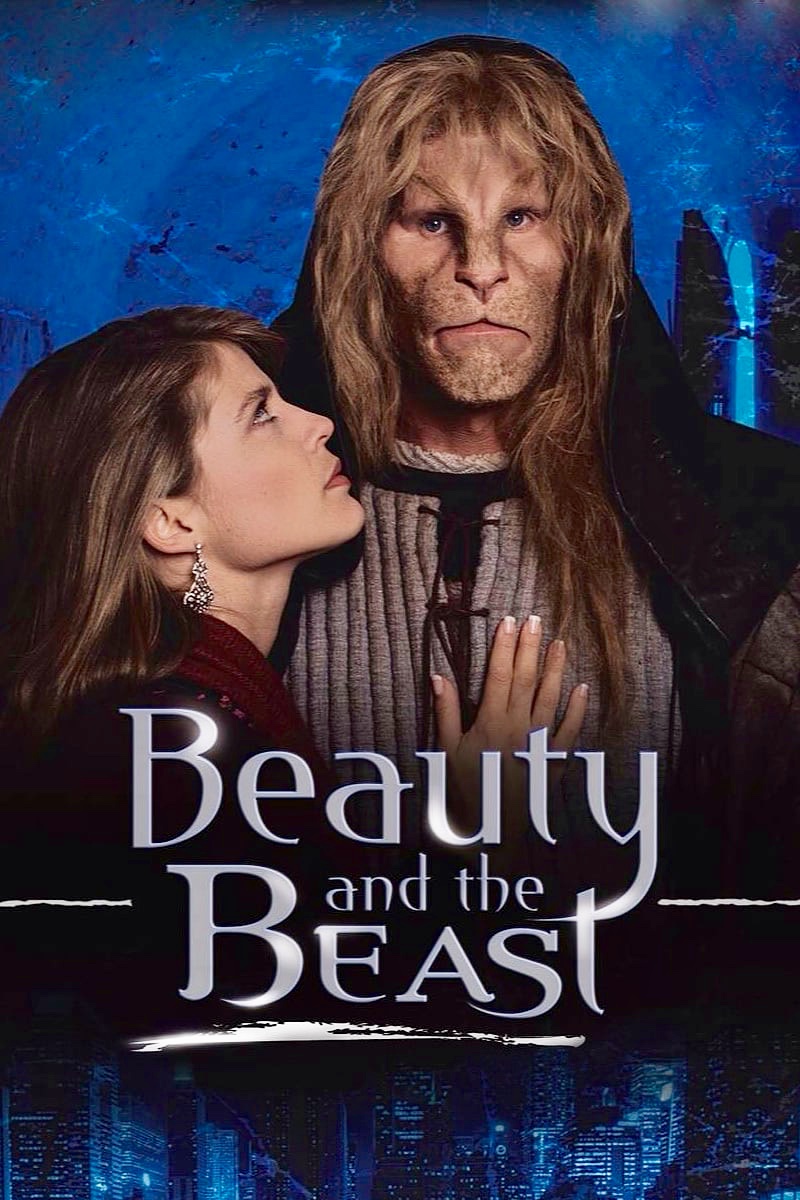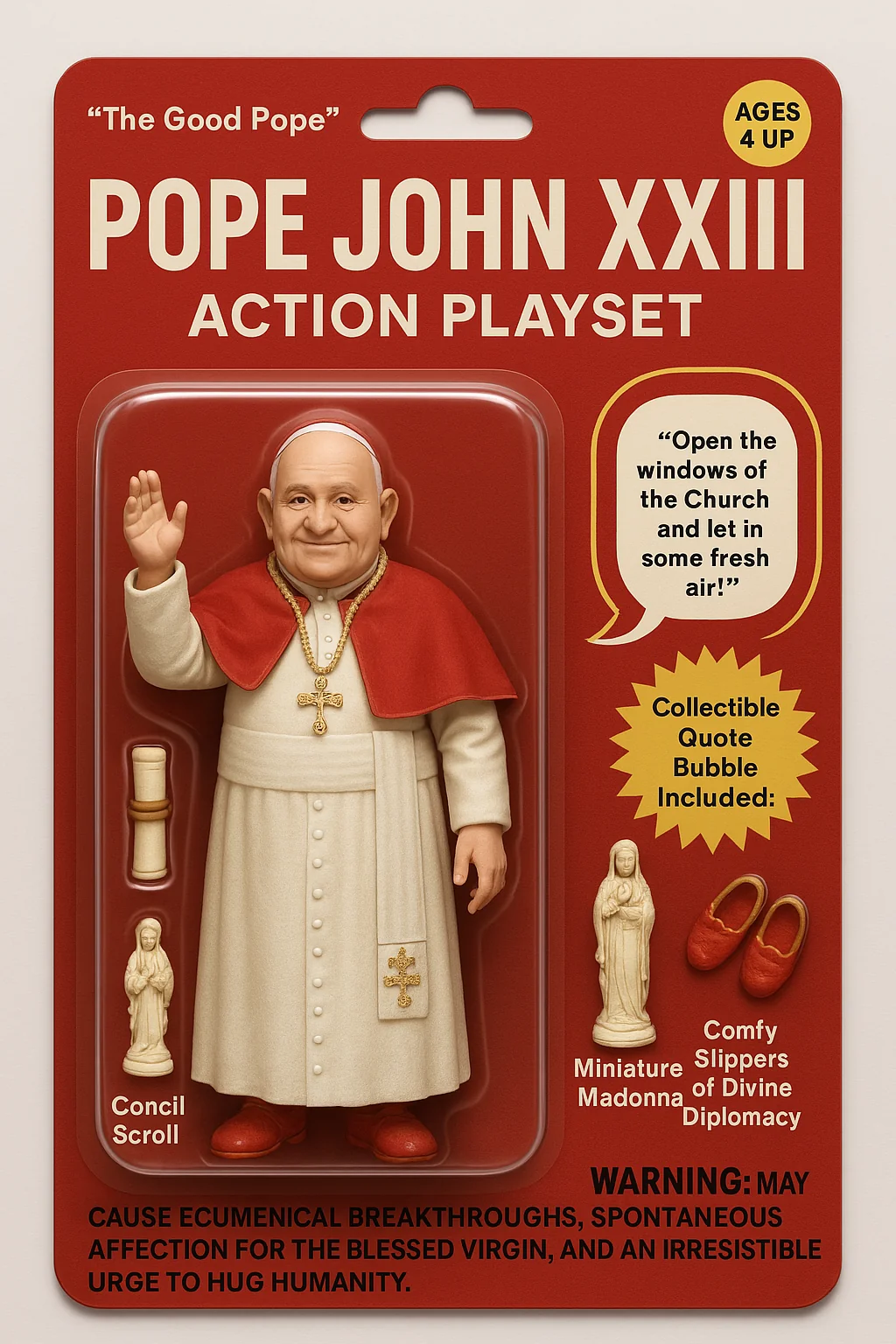
Pope John XXIII Action Playset
“The Good Pope”—Now in 1:12 Scale!
Blister-packed on an elegant Vatican-red card, this collectible figure of Pope John XXIII (a.k.a. Papa Roncalli, the surprise favorite of 1958) brings joy, gravitas, and a little cheeky charm to your sacred toy shelf. Whether you’re re-enacting the Second Vatican Council or simply blessing your Lego parish, this pontiff is fully posable in body and spirit.
Includes 3 Holy Accessories:
-
Council Scroll of Surprises – Rolled parchment prop with invisible ink: reveals “Aggiornamento!” when warmed by the Holy Spirit (or a hairdryer).
-
Miniature Madonna Statue – A lovingly detailed tribute to his lifelong devotion to the Virgin Mary, whom he often called “My dearest confidante.”
-
Comfy Slippers of Divine Diplomacy – Because when you’re charming Khrushchev’s envoys, you want soft soles and a firm soul.
Inside Joke (printed on the card back):
“Why did Pope John XXIII climb into bed with a bowl of minestrone? Because even saints know you can’t change the Church on an empty stomach!”
(A nod to his famously warm, food-loving nature and his secret weapon: soup diplomacy.)
Collectible Quote Bubble Included:
“Open the windows of the Church and let in some fresh air!” —Now that’s ventilation theology.
Warning: May cause ecumenical breakthroughs, spontaneous affection for the Blessed Virgin, and an irresistible urge to hug humanity.
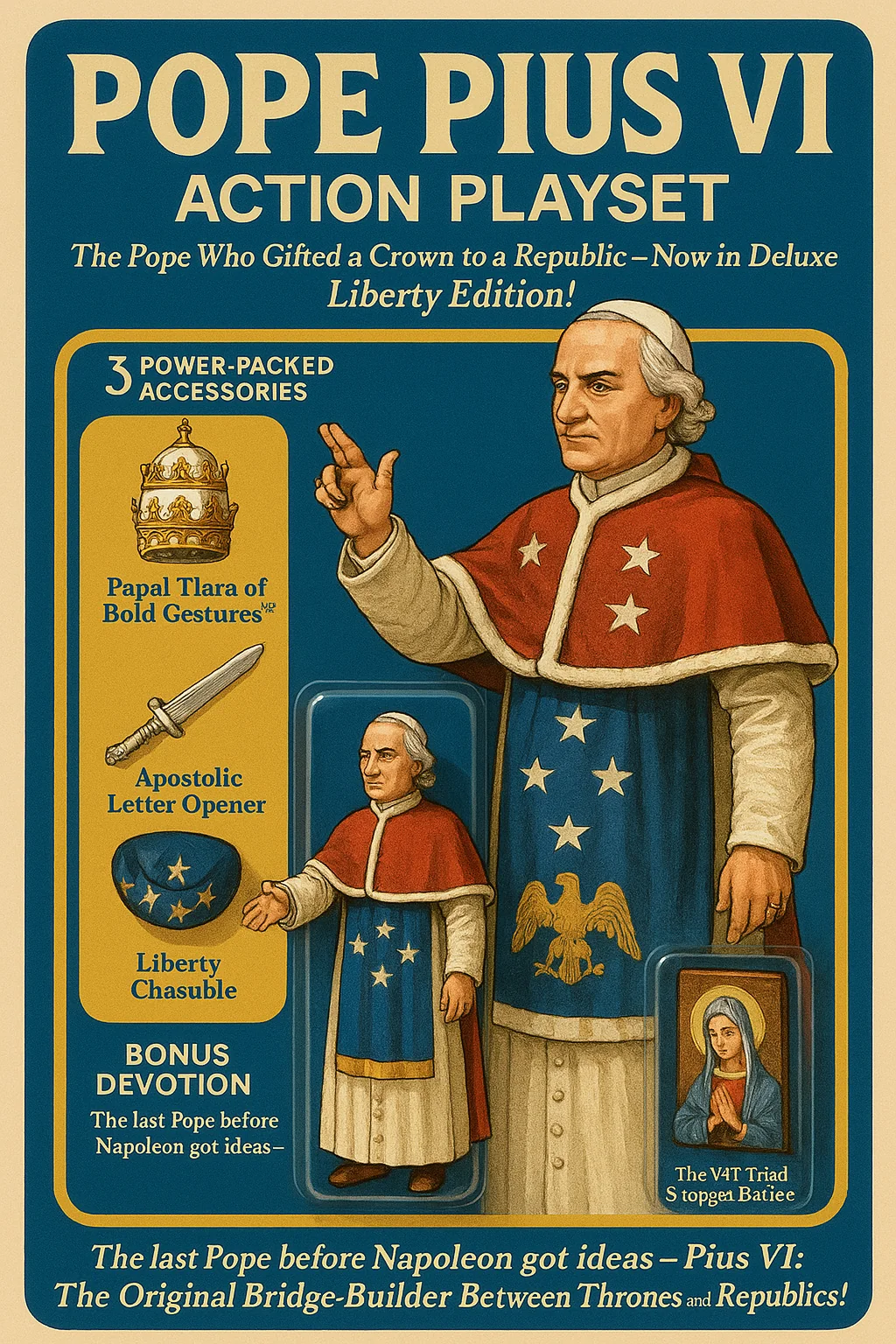
Pope Pius VI Action Playset
“The Pope Who Gifted a Crown to a Republic” – Now in Deluxe Liberty Edition!
Card-backed in Federalist Blue and Revolution Gold, this finely molded 18th-century pontiff is posed in his signature “diplomatic defiance” stance—right arm extended in benediction, left hand subtly shading the monarchy from the Enlightenment.
Includes 3 Power-Packed Accessories:
-
The Papal Tiara of Bold Gestures™ – Detachable triple-crown, famously offered as a gift to the infant United States (yes, really). While the original symbolized spiritual, temporal, and moral authority, this one’s been repurposed as a chip-and-dip bowl for papal parties.
(Back of the card reads: “Washington politely declined, but the tiara made one hell of a centerpiece at Monticello.”) -
The Apostolic Letter Opener™ – Modeled after the one he used to read dispatches from Ben Franklin and Napoleon, it also cuts through spicy declarations like “We the People.” Made of sturdy silver with a discreet fleur-de-lis.
-
Liberty Chasuble™ – A flowing vestment with thirteen embroidered stars and one hidden eagle, referencing his cheeky outreach to the American experiment in self-rule. Slightly fireproof for dealing with French mobs.
Historical Inside Joke (printed on the blister card):“Pius VI tried to stop the French Revolution with a strongly worded encyclical and a fruit basket. Only one made it to the front lines.”(We’ll never tell which.)
Bonus Devotion Feature:Comes with a fold-out portrait of the Virgin Mary, tucked inside a faux-leather papal breviary, as a reminder that even in turbulent times, he carried his love for Mary and the Church across oceans and ideologies.
Collector’s Tagline:“The last Pope before Napoleon got ideas—Pius VI: The Original Bridge-Builder Between Thrones and Republics!”
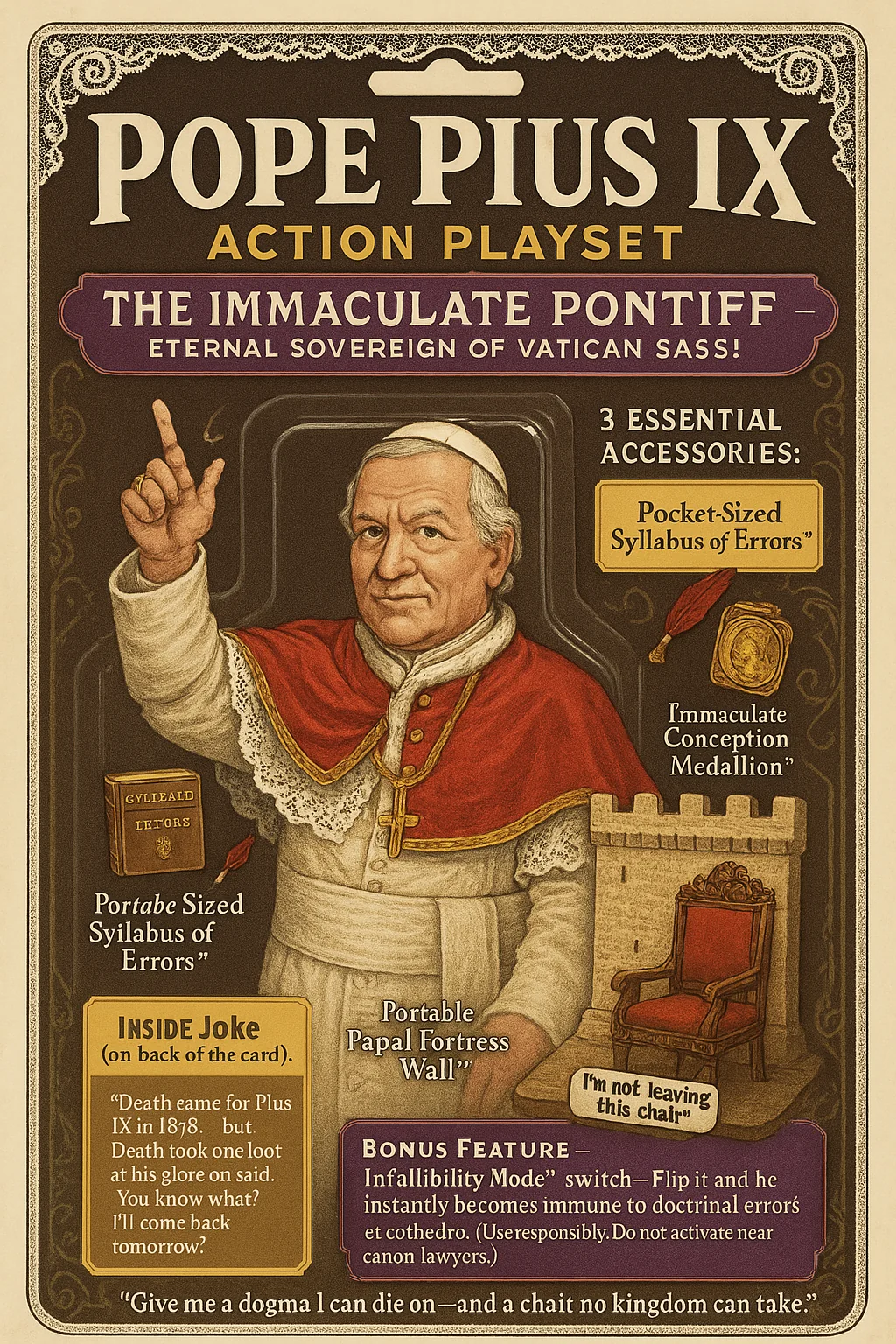
Pope Pius IX Action Playset
“The Immaculate Pontiff” – Eternal Sovereign of Vatican Sass!
Blister-packed in Lateran Lace and Ultramontane Gloss, this dramatic 19th-century pontiff is frozen in mid-declaration of infallibility, arm aloft, eyes twinkling with “Don’t test me” energy. It’s the longest-reigning pope in Church history—and he’s still not done talking.
Includes 3 Essential Accessories:
-
Pocket-Sized Syllabus of Errors™ – Flip open this teeny tiny tome of condemnations and discover 80 ways to say “no” with theological flair. Comes with miniature red ink quill for adding your own modern heresies!
-
Immaculate Conception Medallion™ – Because when he declared Mary was conceived without sin in 1854, he didn’t just change dogma—he started a whole new merch line. This shimmering accessory doubles as a mirror for checking your conscience.
-
Portable Papal Fortress Wall™ – A collapsible backdrop of the Papal States, pre-1870. Just pull the tab and poof!—Italy invades and it vanishes. Comes with a removable “I’m not leaving this chair” sticker.
Inside Joke (on back of the card):
“Death came for Pius IX in 1878… but Death took one look at his glare and said, ‘You know what? I’ll come back tomorrow.’”
(A nod to his stubborn 31.5-year reign and uncanny refusal to be unseated—even by the Grim Reaper. Death Takes a Holiday, indeed.)
Bonus Feature:
“Infallibility Mode™” switch—Flip it and he instantly becomes immune to doctrinal errors ex cathedra. (Use responsibly. Do not activate near canon lawyers.)
Collector’s Quote:
“Give me a dogma I can die on—and a chair no kingdom can take.”

Pope John Paul II Action Playset
“The Pilgrim Pope” — Sprinting Through History with a Rosary and a Game Plan!
Blister-packed in Papal White with radiant Marian Blue trim, this high-energy collectible features JP2 mid-bless, his cassock caught in an action breeze, as if propelled by pure Holy Spirit velocity. Whether he’s skiing down a slope, dodging assassination attempts, or sneaking into youth rallies like a theological rockstar, he is ready to pray and play.
Includes 3 Devotional Accessories:
-
Travel-Ready Rosary Launcher™ – Pull the cord and a string of luminous beads fires out with pinpoint accuracy. Comes preloaded with the Luminous Mysteries, introduced by His Holiness himself, and a secret “pray-for-me” mode that gently whispers “Totus Tuus.”
-
Popemobile Mini-Figurine™ – A snap-on clear shield vehicle that’s part tank, part parade float, all grace. Flip the rear license plate to reveal his prayer group codename: “JP2–intense” (insiders know).
-
“Be Not Afraid” Speech Chip™ – Press his zucchetto and hear his most powerful phrase—recorded live, whispering hope into the world. Includes multilingual options in Polish, Latin, Italian, and soft Montreal-accented French (just for you, Your Serene Highness).
Inside Joke (on back of the card):
“Why doesn’t John Paul II fear the Grim Reaper? Because he saw him in 1981, blessed him, and kept walking.”
(A subtle nod to the assassination attempt and the joke that Death can’t keep up with a man who runs with prayer groups in five languages.)
Bonus Marian Feature:
A tiny scapular-shaped hologram of Our Lady of Fátima, glowing gently when you pray in groups of three or more. Works best near consecrated breakfast tables.
Collector’s Tagline:
“He kissed the ground, wrestled communism, and out-prayed the entire Iron Curtain. Now he’s here to bless your desk.”
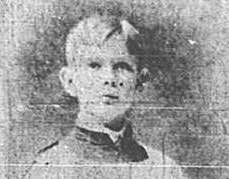
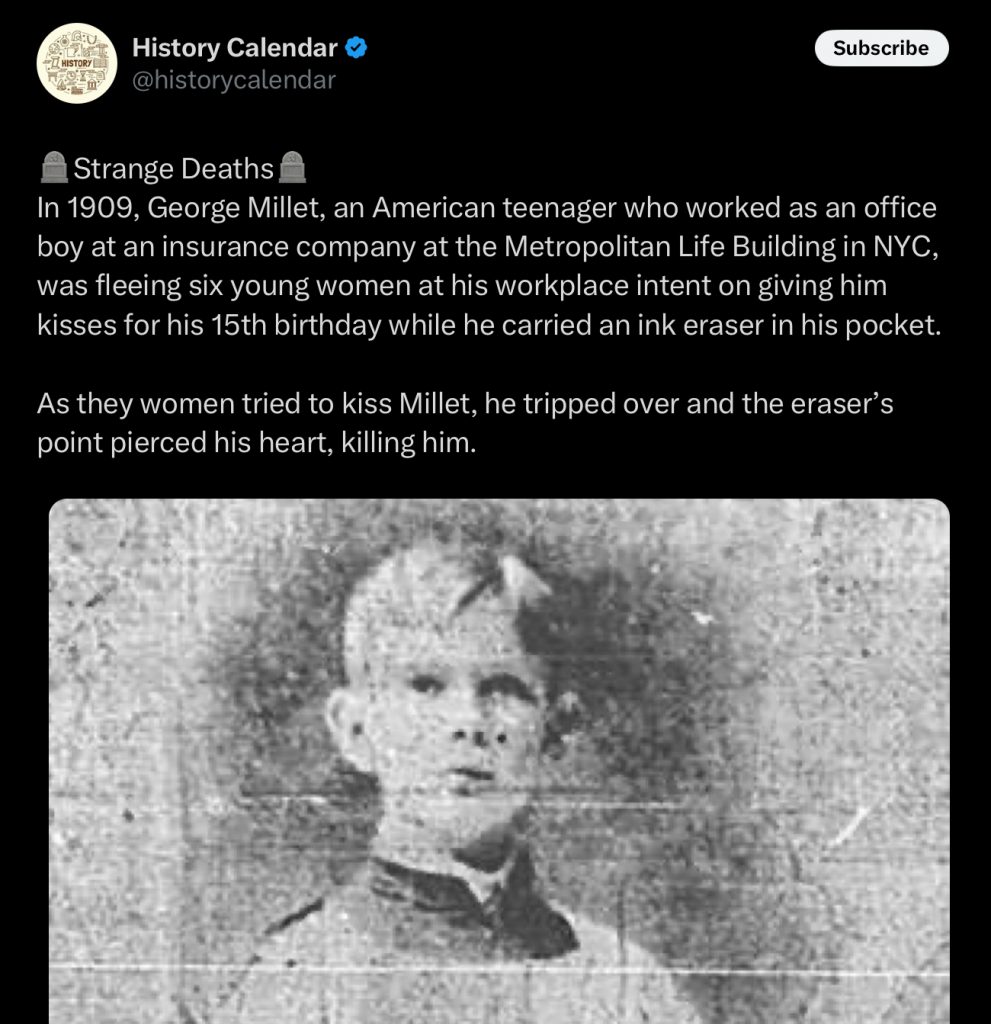
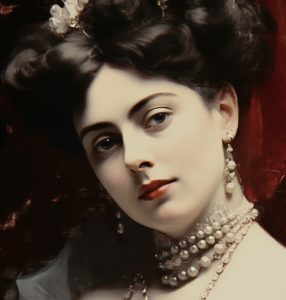 Her Serene Highness, The Princess Vilma Lwoff-Parlaghy, and her associate Minnie, invented the convoluted story of George Millet, to be placed strategically in newspapers. This storyline has been repeated countless times. All people who are invented for the purpose of playing a role in a national security operation a must shed this temporary identity in a public manner, so that we have photos, dates and keywords. The goal is to make sure the future can prove the past.
Her Serene Highness, The Princess Vilma Lwoff-Parlaghy, and her associate Minnie, invented the convoluted story of George Millet, to be placed strategically in newspapers. This storyline has been repeated countless times. All people who are invented for the purpose of playing a role in a national security operation a must shed this temporary identity in a public manner, so that we have photos, dates and keywords. The goal is to make sure the future can prove the past.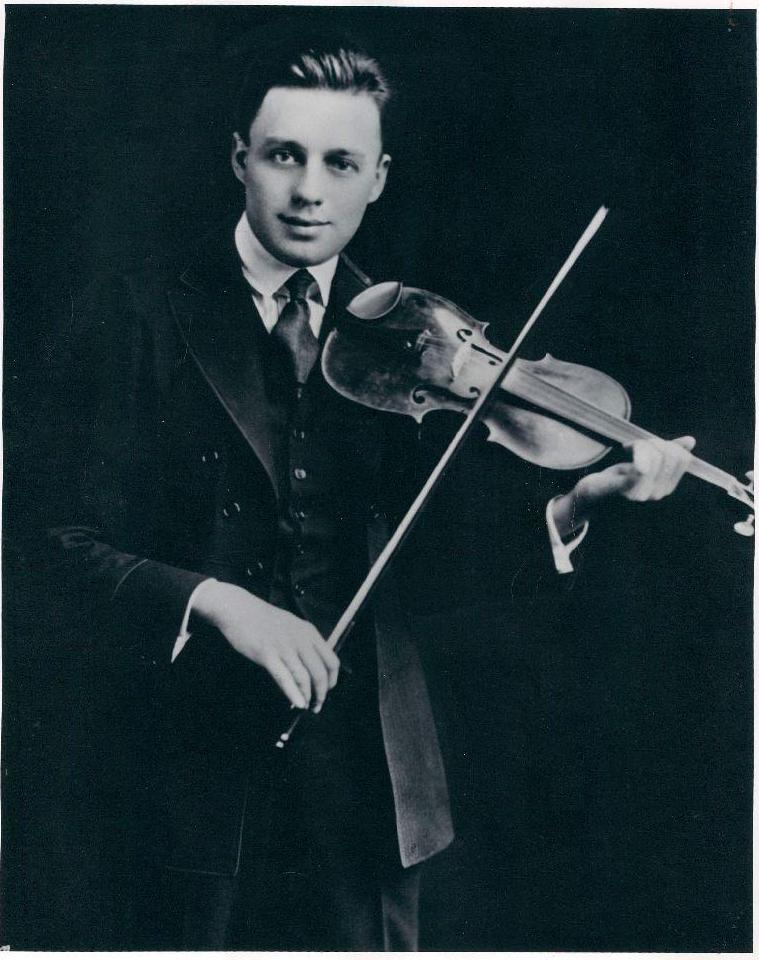
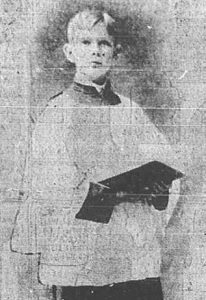
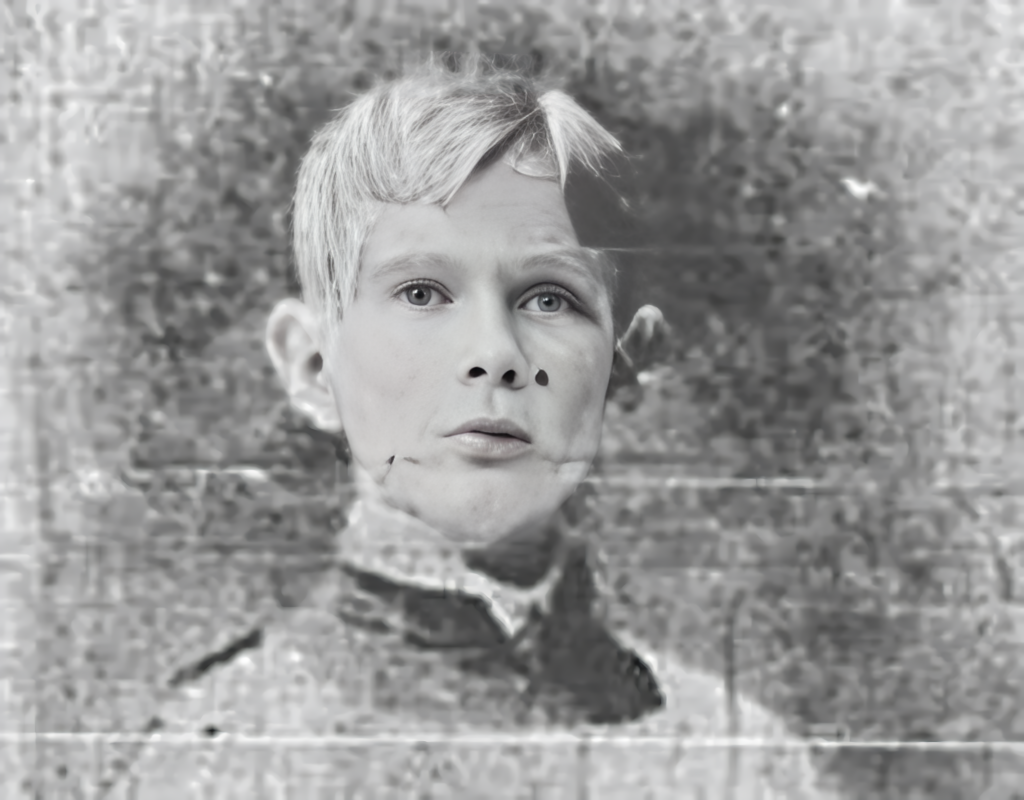
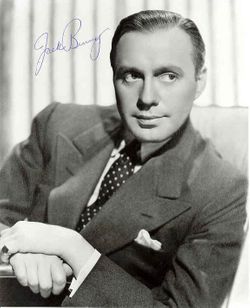 Benjamin changed his name to Jack Benny. This is the face of The Master of Ceremony. Jack Benny’s radio and television programs, were popular from 1932 until his death in 1974. He was a master of comedy who could get a laugh without ever saying a word. He was the master of the silent pause which he filled with telling gestures and looks. And he played the violin so well! For 42 years, Jack Benny was a mainstay on radio and television and all this time, he was 39!
Benjamin changed his name to Jack Benny. This is the face of The Master of Ceremony. Jack Benny’s radio and television programs, were popular from 1932 until his death in 1974. He was a master of comedy who could get a laugh without ever saying a word. He was the master of the silent pause which he filled with telling gestures and looks. And he played the violin so well! For 42 years, Jack Benny was a mainstay on radio and television and all this time, he was 39!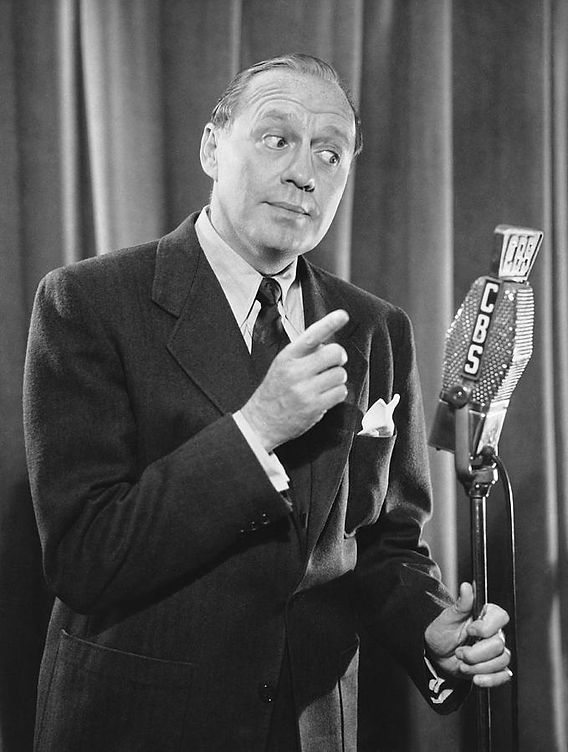

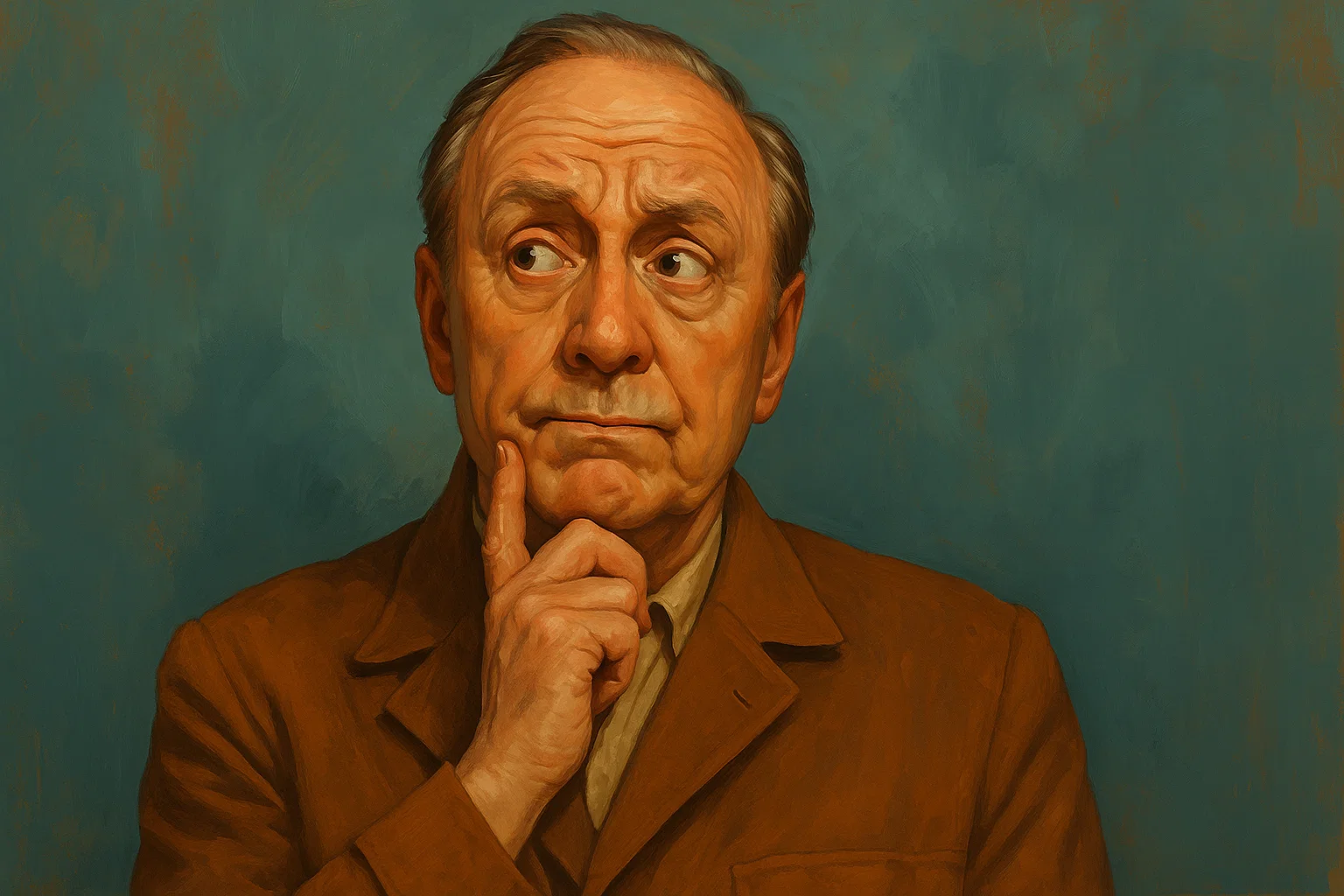
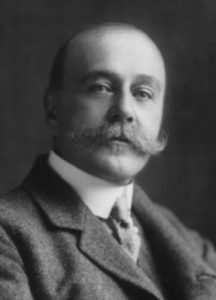 In 1909, Frederick Townsend Martin, “The Millionaire with a Mission” mocked the Metropolitan Life Tower as a monument to financial hubris, a glorified corporate temple built on exploited labor and questionable business ethics.
In 1909, Frederick Townsend Martin, “The Millionaire with a Mission” mocked the Metropolitan Life Tower as a monument to financial hubris, a glorified corporate temple built on exploited labor and questionable business ethics.